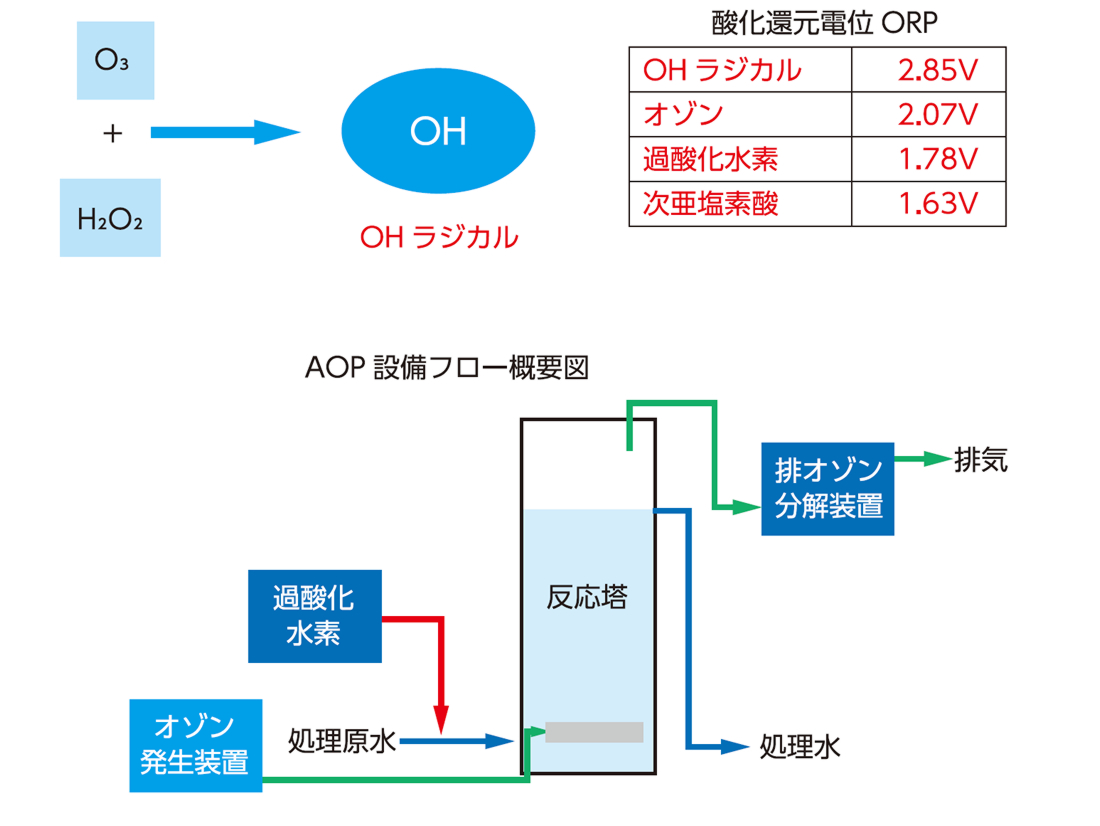Application example
Aquariums and swimming pools
Example of ozone treatment equipment installation flow for aquariums and swimming pools
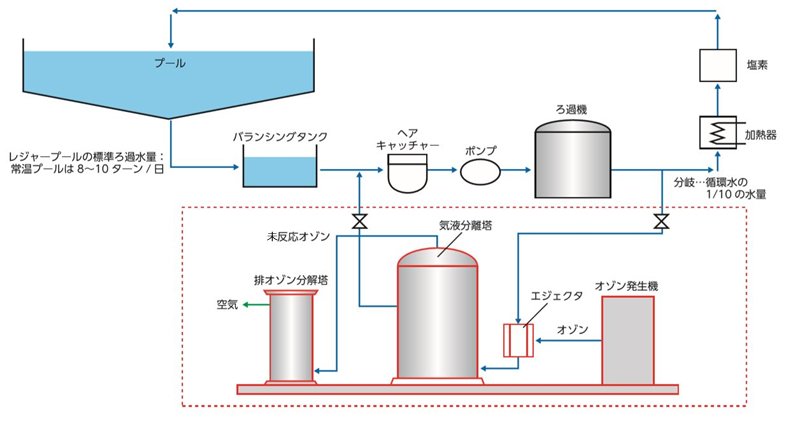
By branching off a portion of the circulating water and treating it with ozone, it is extremely effective in improving transparency, reducing odors, and sterilizing.
Example of ozone treatment in an aquarium breeding tank
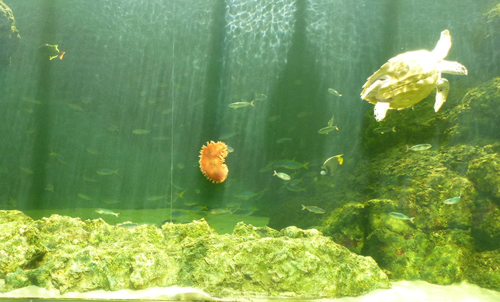
Before introduction (chromaticity 2.7)
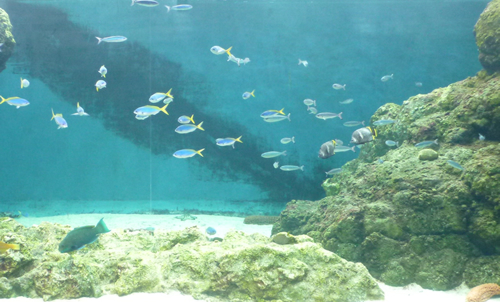
After introduction (chromaticity 0.7)
Delivery record
For swimming pools (since 1988) Over 450 facilities (800 units)
For zoos and aquariums (1990-) More than 30 facilities (105 machines)
Graywater treatment field
An example of building grey water (reusing rainwater, kitchen wastewater, etc. for toilet water)
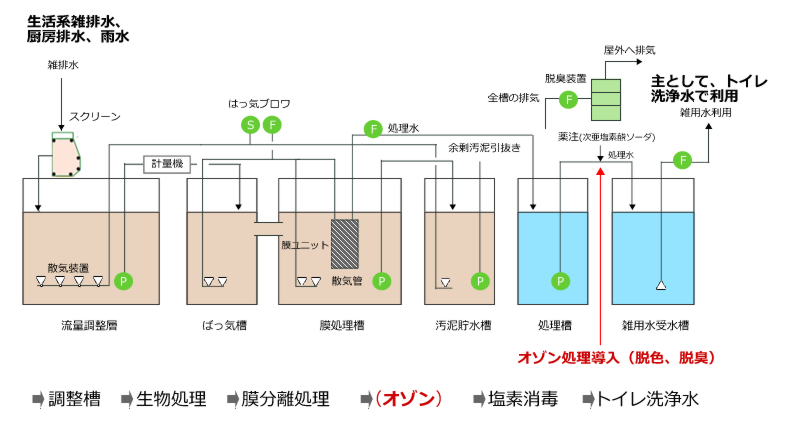
Features of our ozone treatment systems (SRS series, STS series)
- Compact design and space saving
-
Compact, air-cooled PSA oxygen generator with built-in ozonizer and ejector-type reaction unit, making it easy to install in machine rooms of buildings.
- Simple construction
-
The reactor for ozone treatment, the waste ozone decomposition tower, etc. are installed on the common base, and all you need to do is connect the treated water outlet pipe and turn on the main power.
Cleaning and sterilization/disinfection field
Chlorine-based chemicals are commonly used for sterilization and disinfection, but their effectiveness decreases as bacteria develop resistance. As a countermeasure, measures are taken to increase the chlorine concentration or dosage, but this increases the residual chlorine, raising concerns about the impact on taste, flavor, odor, etc.
With the ever-increasing demand for food safety and the need to adapt to a recycling-oriented society, please consider using ozone, which leaves no residue. We believe that it can also contribute to the recovery of cold energy through the recycling of cleaning wastewater.
Ozone treatment is more commonly used overseas than in Japan, and is sometimes incorporated as a sterilization device into overseas-made equipment.
If you have any concerns about the maintenance of overseas products, please feel free to contact us.
Usage example
PET bottle/cap cleaning, container and other plastic container cleaning, food surface cleaning and sterilization, cleaning water recycling (reduction of wastewater volume, recovery of cold energy), etc.

- Foods that may cause food poisoning
- Norovirus, Vibrio parahaemolyticus, Salmonella, pathogenic E. coli, Yersinia enterocolitica, Campylobacter
- toxins that cause food poisoning
- Clostridium perfringens, Bacillus cereus, Staphylococcus aureus, Clostridium botulinum
- Deteriorating flavor
- lactic acid bacteria

Examples of using ozone generators in the kitchen
Examples of using ozone generators in the kitchen
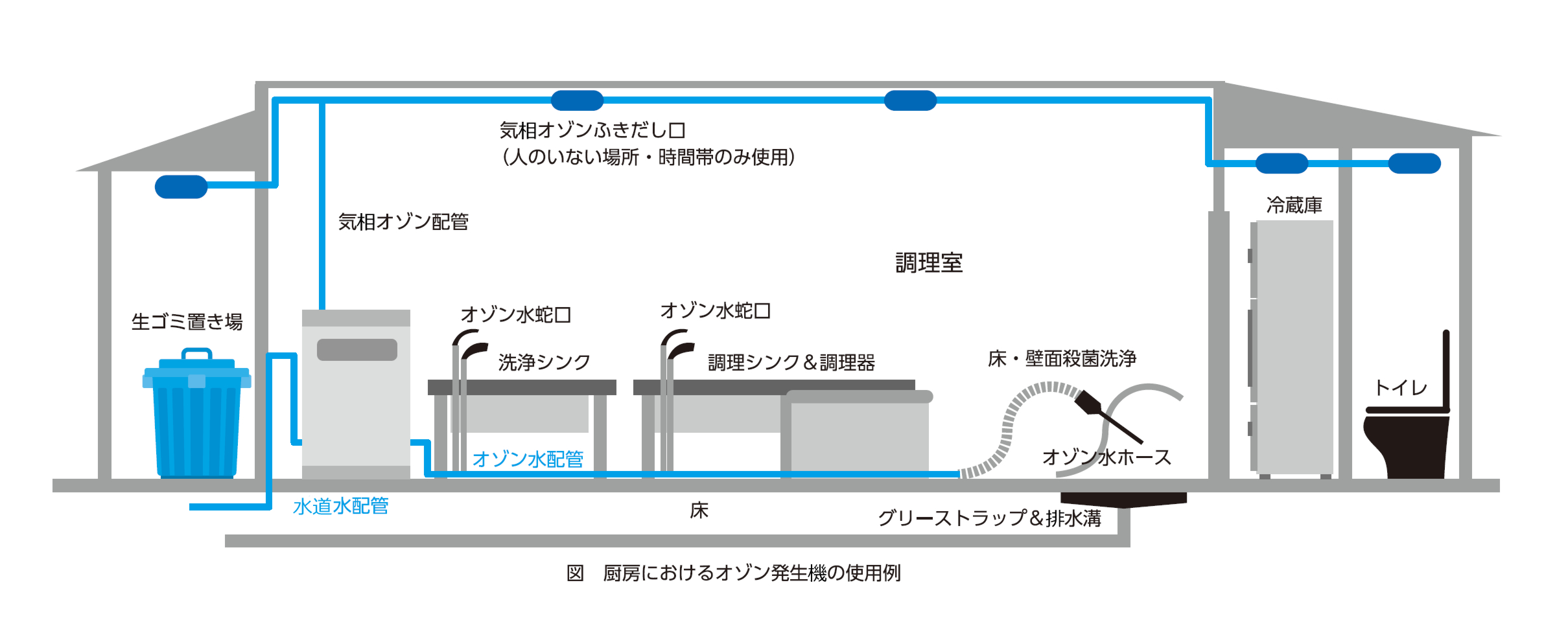
Deodorization field
Inevitable challenges in factory location
Due to land redevelopment and the conversion of industrial areas into residential land and the construction of high-rise apartment buildings, factories are increasingly having to deal with complaints from surrounding residents about odors and noise. In order to coexist in the community for the long term, companies will likely be forced to respond more and more in the future. Ozone has different deodorizing mechanisms depending on how it is used, but it is possible to decompose and reduce various odor-causing substances through chemical reactions.
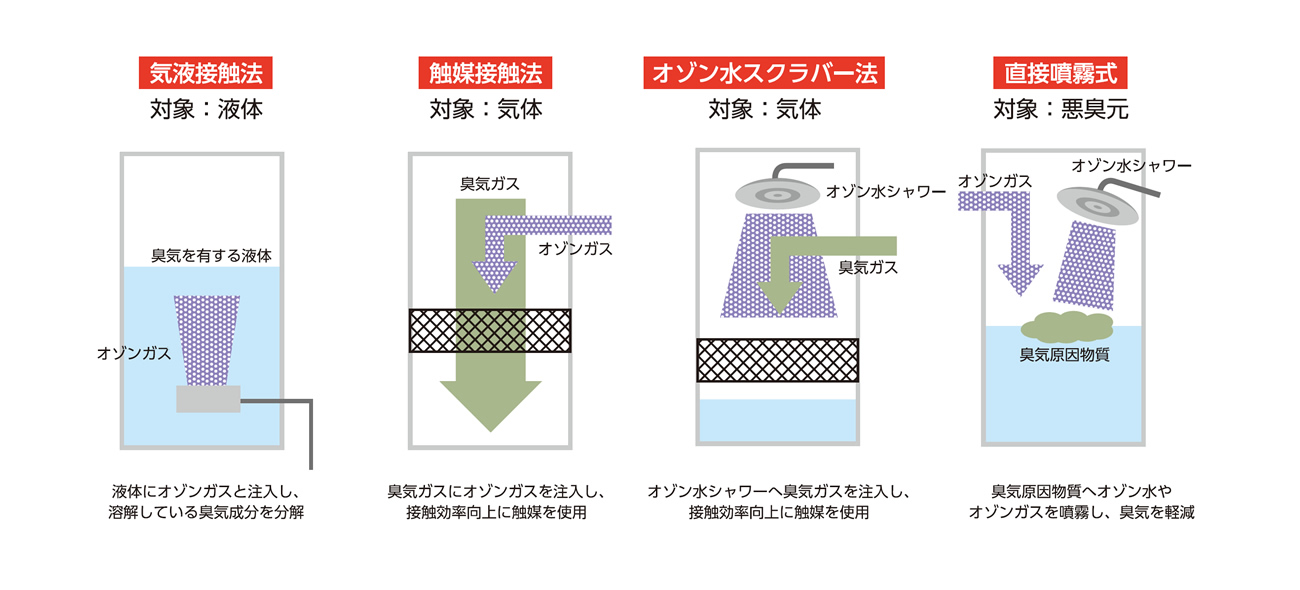
Land-based aquaculture business field
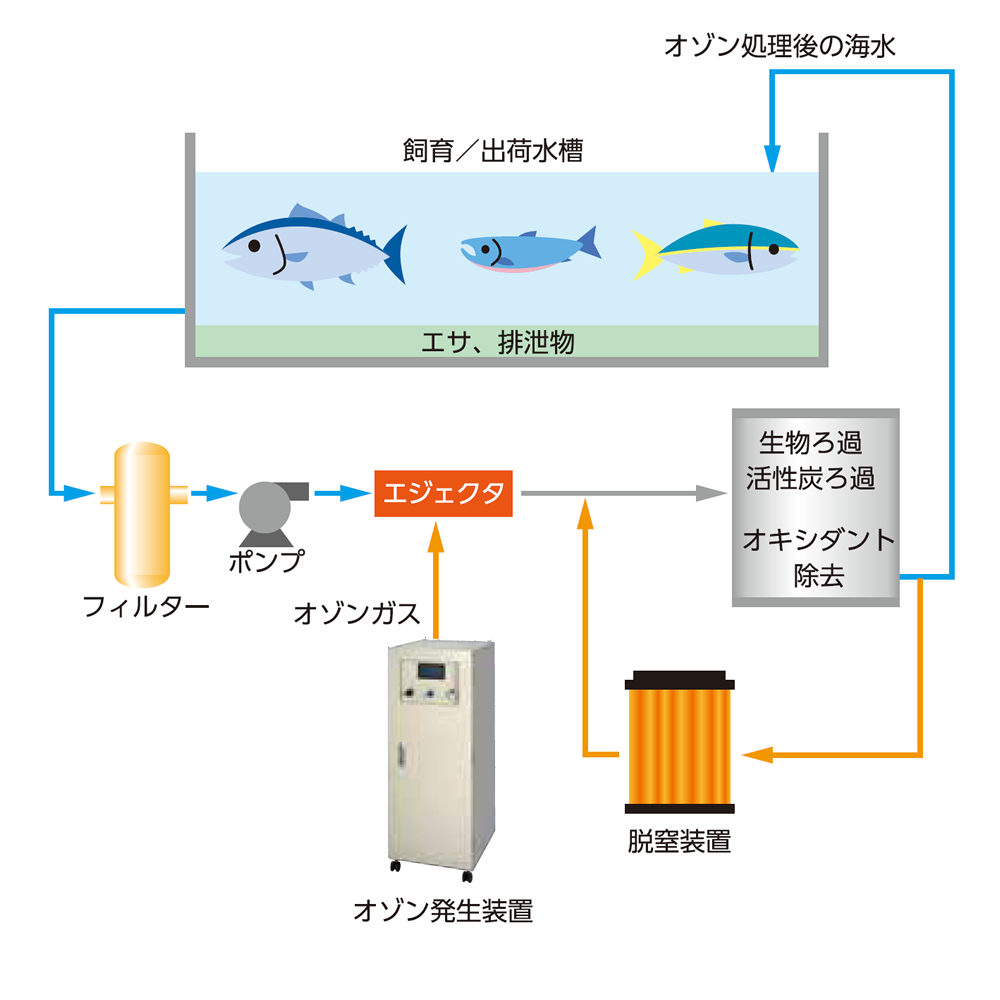
- Improves product odor and flavor
-
Improves product quality (taste and aroma) by decomposing and deodorizing odors from feed and excrement.
- Energy-saving effect
-
Recycled water minimizes make-up water and recycles cooling energy
- Improved transparency
-
It increases the transparency of the circulating water, improves the accuracy of underwater image analysis, and appeals to visitors about the breeding environment.
- Disinfection effect
-
Preventing infectious diseases through ozone sterilization
Ozone does not remain, so there is no need to worry about chemicals remaining in the product.
- Improved dissolved oxygen
-
The ozone generator has a built-in oxygen generator, so oxygen can be injected at the same time as ozone.
- Contributing to reducing environmental impact
-
Ozone returns to oxygen after reaction and has no residual effect on the ecosystem.
- Shorter shipping times
-
By treating the circulating water in the shipping tank, it is expected that the rearing period will be shortened (decomposing geosmin, etc.)
Examples of ozone use in land-based aquaculture
Examples of ozone use in land-based aquaculture
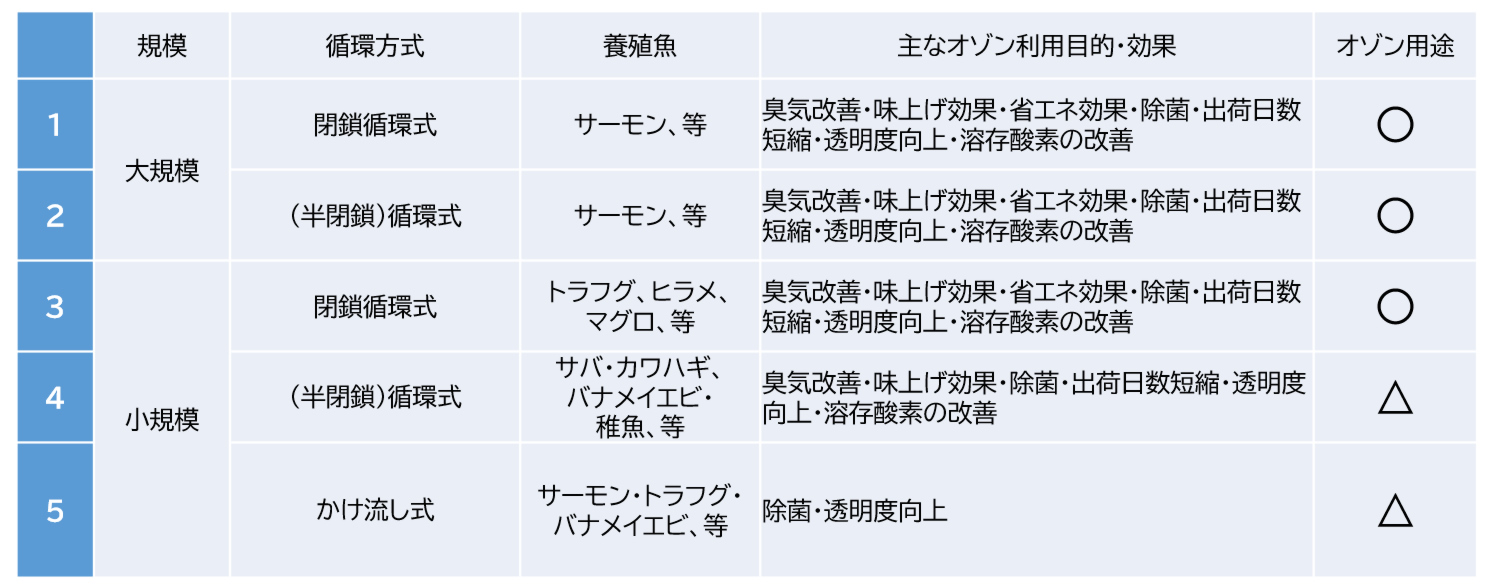
Wastewater treatment (advanced treatment using ozone)
We contribute to reducing environmental impact by treating various substances that cause water quality problems, such as those contained in industrial wastewater, with ozone.
Ozone has strong oxidizing power and selectively reacts with unsaturated bonds, including carbon-carbon double bonds. Therefore, even persistent substances that are difficult to decompose through biological treatment can be decomposed using ozone or AOP treatment(*).
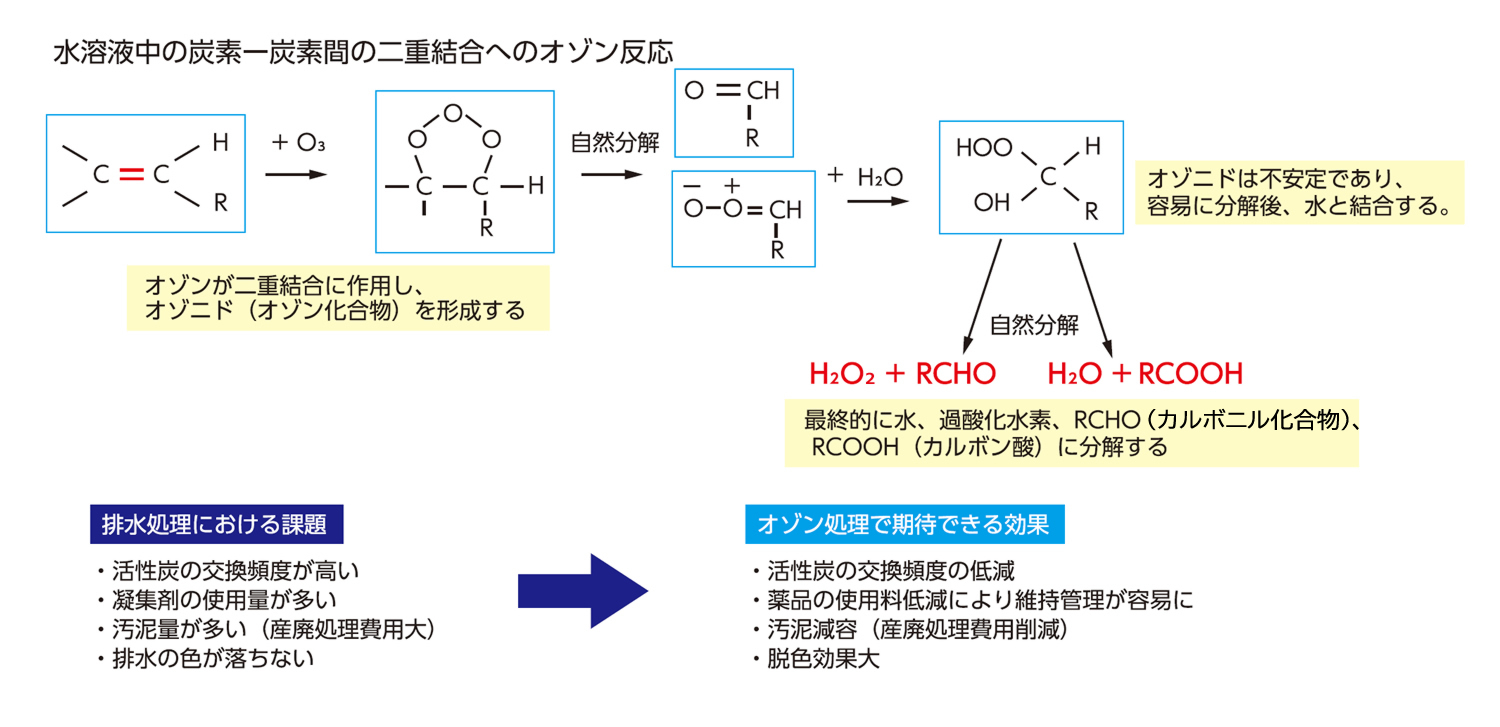
AOP Processing
Abbreviation for Advanced Oxidation Process. This process combines ozone and H2O2, etc. to generate OH radicals with stronger oxidizing power, and uses the power of these OH radicals to decompose persistent substances.
